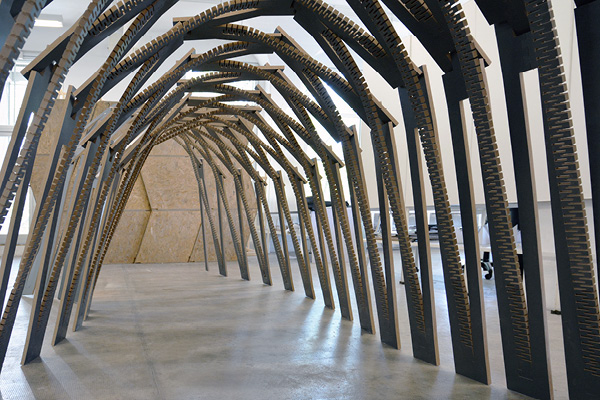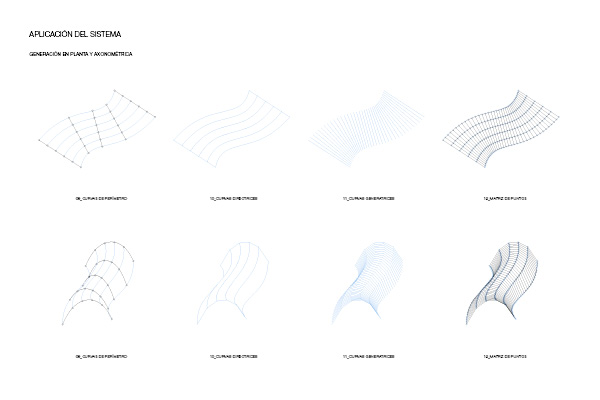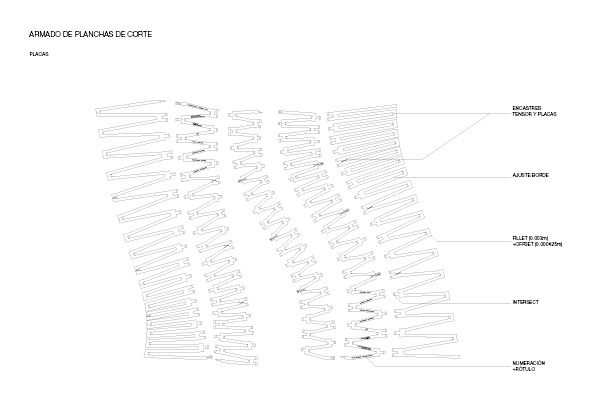


School of Architecture and Urban Studies - Torcuato Di Tella University
Digital Tectonic
PROFESSOR
Matías Imbern
TEACHING ASSISTANT
Eugenio Tenaglia
RESEARCH
Milagros Barchi
Gastón Berghman
Florencia Fernández
Esteban Javornik
Diego Laplaza
Suyai Teja
SPONSORS
EGGER | 30
YEAR 2017
DESCRIPTION:
The investigation is based on a framework of both formal and typological exploration, considering the surface as a means of materializing an open, continuous and self-supporting structure.
The research is established within the debate on the superficial continuity rooted in the 90's, which arises as a consequence of the limitations presented by the manufacture regarding the design of complex surfaces. From the incorporation of digital technologies, it opens the possibility that they allow us to avoid the problem of standardization and the materialization of geometries that were previously impossible to describe or make. In this sense, the work aims to resolve the dichotomy between the production of differential digital models and their modes of production. As case studies, the research focuses on the rethinking of historical models that fulfil the premise of continuity and self-sufficiency, working with vault typologies that allow assimilating differential geometric compositions. Thus, it seeks to exploit and hack its tectonic quality in a project capable of innovating in both the formal and the performative fields.
The technique plays an essential role in the development of the tectonic system. It is the means that allows feedback and consolidate digital production in pursuit of a result according to material performance. The choice of kerfing as the driving technique of the design process aims to support the wills inherent in research. It is a procedure that involves the controlled removal of material in those places where curvature is desired, while reducing the resistance of the workpiece to mechanical flexibility. Consequently, kerfing gives the wood surface a quality that is not intrinsic to its natural state, pushing its flexural capacity to the limit.
Just as the dichotomy between the digital and the analog is installed at the center of design production, the tectonic system incorporates intelligences of the same nature. It presents a scheme in which the totality of its components acts in solidarity, and where the value of each of them resides both in the constitution of that totality and in the opposition to each particular component.
Dichotonics operates within this framework. Rework historical models from a contemporary approach. Reevaluates the digital from the material. It composes its totality from the parties and vice versa. Rejects surface continuity from fragmentation. Achieves stability from the conjunction of flexible / unstable elements. It addresses the macro scale from the micro scale. It tensions part of its components from the compression of the whole. It works as a gradient between extremes, mediating between all its dualities in order to achieve a harmonic tension.


































